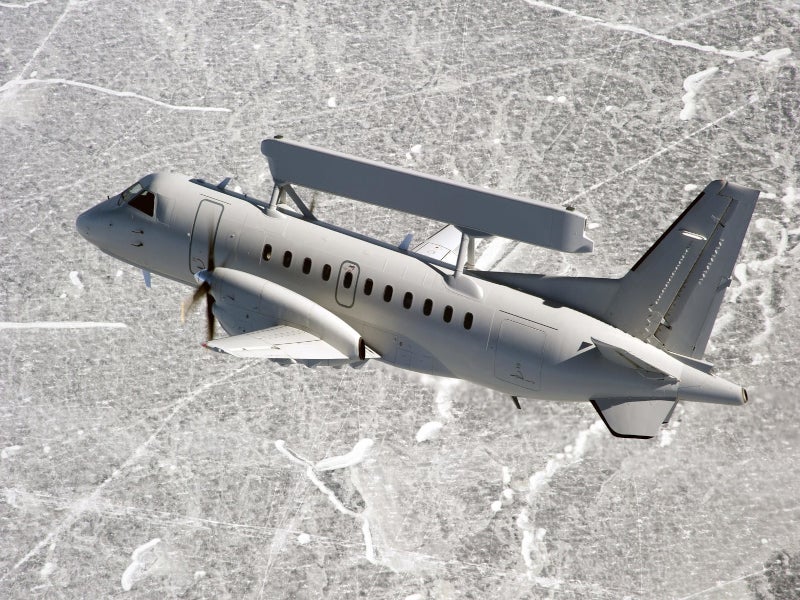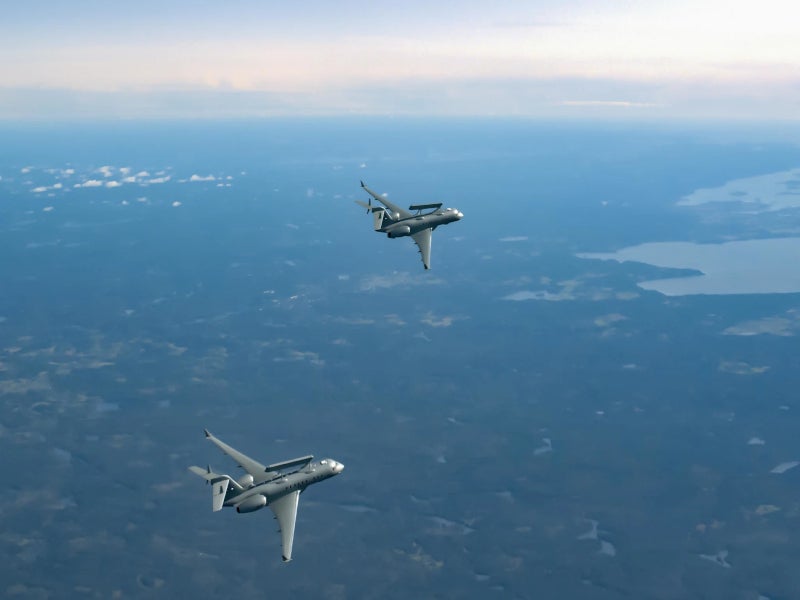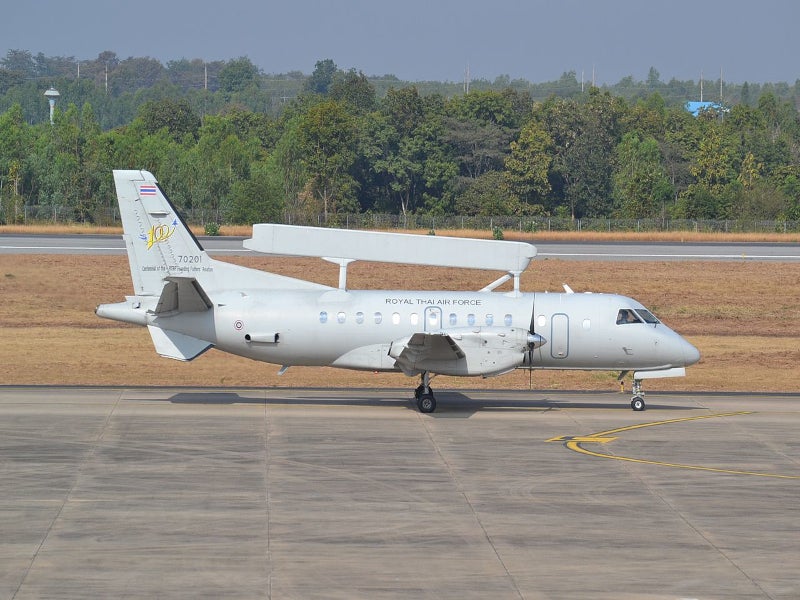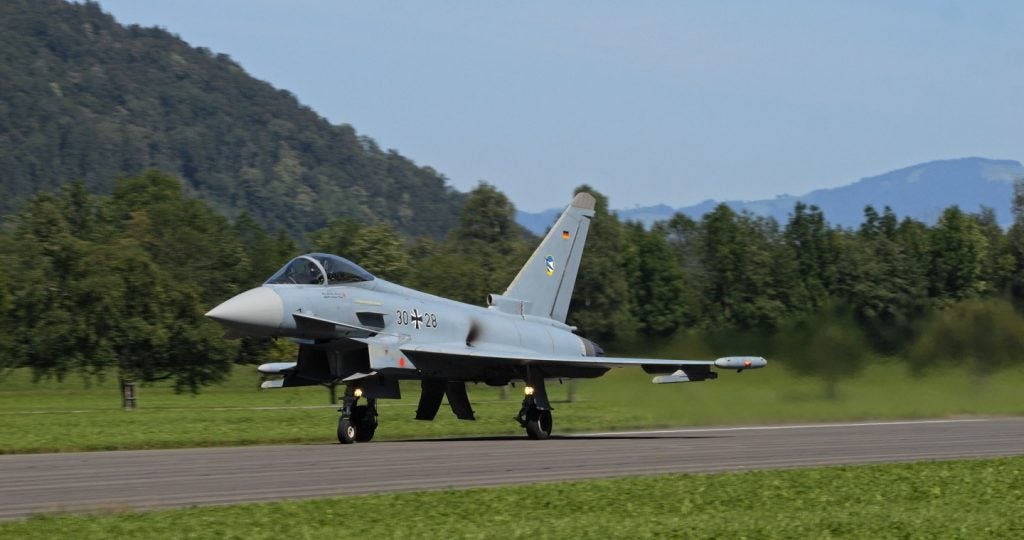The Saab 340 is an airborne early warning and control (AEW&C) aircraft developed by Saab, an aerospace and defence company based in Sweden. It is primarily used by the Swedish Air Force and Royal Thai Air Force.
Poland’s Ministry of National Defence awarded a contract worth approximately Skr600m ($57.6m) to Saab in July 2023 to supply two Saab 340 AEW aircraft between 2023 and 2025. The contract includes not only ground equipment but also in-country logistics and support services.
The modified versions of Saab 340 aircraft include Saab 340B AEW (S 100B Argus), Saab 340B AEW-200 and Saab 340B AEW-300 (S 100D Argus).
Saab 340 airborne early warning and control aircraft design details
Saab 340 aircraft is 19.73m long and 6.97m wide and has a wingspan of 21.44m. Extended wing tips in a few variants extend the wingspan to 22.75m. The maximum fuel capacity is 2.58kg.
The aircraft can operate at a maximum altitude of 25,000ft and can carry a maximum payload between 3.13kg and 3.40kg based on the variant. It is equipped with early warning systems and the advanced Erieye radar.
The Saab 340 AEW, along with its corresponding ground equipment, offers a comprehensive situational overview suitable for military and civilian operations encompassing air surveillance, rescue missions and others.
Erieye AEW/AEW&C system details
Saab’s Erieye, known as Airborne Surveillance and Control (ASC) 890 in Sweden, represents a comprehensive AEW&C system that delivers versatile capabilities for multiple roles and missions, serving the requirements of both military and civilian domains.
The radar system utilises active Electronically Scanned Array (AESA) technology, which allows for dynamic adjustment of radar energy based on the situation. It can cover a wide area or focus on a smaller prioritised zone. With rapid and precise object detection and tracking capabilities, the radar boasts a high update rate. Its S-band technology guarantees exceptional performance in a range of weather conditions.
Its effective surveillance range spans over 500,000km² horizontally and extends vertically to more than 60,000ft. The system’s sea coverage is unrestricted enabling the detection and tracking of objects including fighter aircraft, hovering helicopters, cruise missiles, and even sea targets as small as jet skis.
The Erieye AEW/AEW&C system has been purchased by nine countries in a range of configurations, establishing it as one of the most extensively employed airborne surveillance systems globally.
Engine and performance
The Saab 340 AEW is equipped with a GE CT7-5A2 engine, while the other modified versions including Saab 340B/Bplus/ExtWT are equipped with the GE CT7-9B with a Dowty Rotol/Hamilton Sundstrand propeller.
The maximum cruise speed of the aircraft ranges between 271kt (502km/h) and 283kt (524km/h), depending on the variant.
Saab 340 maritime security aircraft details
Saab 340 maritime security aircraft (MSA) is a multipurpose aircraft possessing the capability to efficiently survey extensive regions. It was introduced at the Farnborough International Airshow in July 2012. It serves as a crucial element in achieving maritime domain awareness, security and safety, meeting the world’s current demands against piracy, terrorism, smuggling, trafficking, oil pollution and other illegal activities.
The aircraft offers surveillance, search and rescue, transport and medical evacuation capabilities. It can conduct extended-duration flights from limited airfields. Its onboard mission management system, along with datalinks, optical sensors, SATCOM systems and radar, provides the aircraft with the necessary capabilities for its operations.
Saab 340 regional aircraft
Saab 340 AEW is a variant of the Saab 340 passenger aircraft, which is preferred by airline passengers due to its flexibility, comfort and reliability.
The production of Saab 340 passenger aircraft ceased in 1999, but the typical Saab 340 aircraft has only reached half of its intended operational lifespan.
The aircraft features PPG windshields and cockpit windows to ensure robustness, flawless integration with the aircraft structure and enhanced protection against delamination. It also features Goodrich patented FASTboot® pneumatic de-ice boots to protect against icing conditions.









